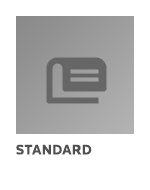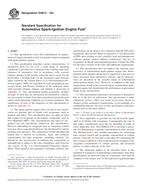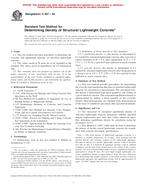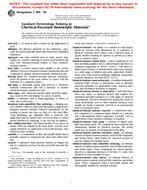ASTM F303-78(1996)
- Standard Practices for Sampling Aerospace Fluids from Components
- standard by ASTM International, 01/01/1996
- Publisher: ASTM
$26.00$52.80
1.1 These practices cover sampling procedures for use in determining the cleanliness of liquids from components. Three practices A, B, and C, have been developed on the basis of component geometry in order to encompass the wide variety of configurations. These practices establish guidelines to be used in preparing detailed procedures for sampling specific components.
Note 1-The term cleanliness used in these practices refers to solid particles in the liquid. It does not generally cover other foreign matter such as gases, liquids, and products of chemical degradation. Cleanliness with respect to particulate contamination does not necessarily give any indication of the other types of contamination.1.2 All components, regardless of application, may be tested provided (1) the fluid medium selected is completely compatible with the materials, packing and fluid used in the test component, and test apparatus, and (2) the fluid is handled in accordance with the manufacturer's recommendations and precautions. A liquid shall be used as the test fluid medium. These test fluids may be flushing, rinsing, packing, end use operating, or suitable substitutes for end use operating fluids. (Caution.)
Note 2-Practices for sampling surface cleanliness by the vacuum cleaner technique (used on clean room garments and large storage tanks) sampling gaseous fluids and handling hazardous fluids such as oxidizers, acids, propellants, etc., are not within the scope of the practices presented; however, they may be included in addendums or separate practices at a later date. Substitute fluids are recommended in place of end item fluids for preassembly cleanliness determinations on components using hazardous end item fluids. After obtaining the sample, the substitute fluid must be totally removed from the test part with particular caution given to the possibility of trapped fluid. It is hazardous to use a substitute fluid for testing assembled parts where the fluid can be trapped in dead ends, behind seals, etc. Note 3-The word fluid used in these practices shall be assumed to be a liquid unless otherwise stated.1.3 The cleanliness of assemblies with or without moving parts may be determined at the time of test; however, movement of internal component parts during the test will create unknown quantities of contamination from wear. Practice B covers configurations requiring dynamic actuation to achieve a sample. The practice does not differentiate between built-in particles and wear particles.
Note 4-Defining allowable cleanliness limits is not within the scope of these practices.1.4 The three practices included are as follows:
1.5 This standard may involve hazardous materials, operations, and equipment. This standard does not purport to address all of the safety problems associated with its use. It is the responsibility of the user of this standard to establish appropriate safety and health practices and determine the applicability of regulatory limitations prior to use. For hazard statement, see Notes.
Related Products
ASTM C567-04
Standard Test Method for Determining Density of Structural Lightweight Concrete..
$23.00 $46.80
ASTM C904-98
Standard Terminology Relating to Chemical-Resistant Nonmetallic Materials..
$23.00 $46.80




